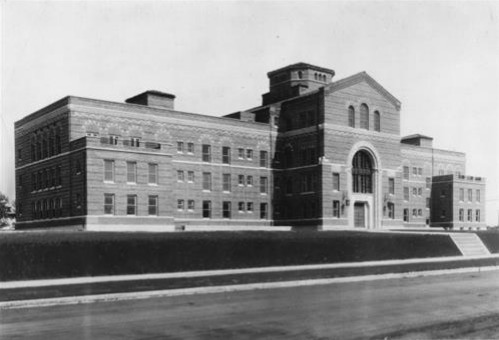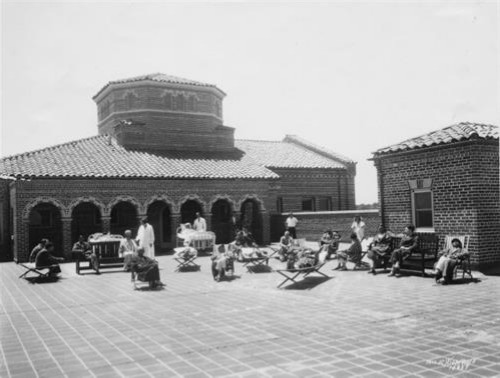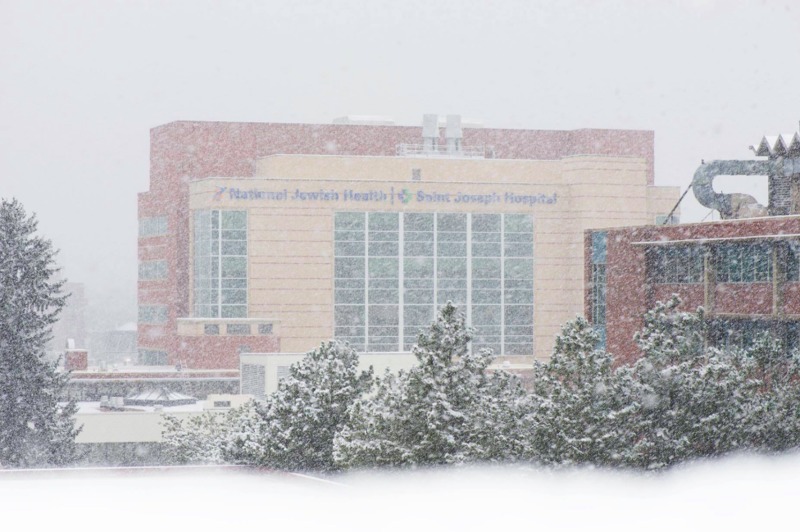National Jewish Hospital for the Treatment of Consumptives (National Jewish Health)

History Colorado Online Collection #89.451.5630.
http://5008.sydneyplus.com/HistoryColorado_ArgusNet_Final/Portal.aspx?lang=en-US
When a patient in the nineteenth century United States was suffering from tuberculosis, the only “cure” was fresh, dry air, such as in the American West. However, many who made the journey did not have enough money for treatment, so charitable organizations stepped in to care for the sick.
Tuberculosis, formerly known as consumption, is one of history’s deadliest diseases. It was the number one killer of Americans until the 1940s, and there was no cure. The only suggestion by medical professionals was to move to a dry climate. This led many people to go West, which was an ideal location for this type of treatment. Healthcare professionals and businessmen built sanitariums (also spelled sanatoriums), facilities meant to treat tuberculosis. Builders modeled these sanitariums on European health resorts, but the American institutions focused on open air tents to treat patients’ respiratory symptoms.
Termed “lungers,” tuberculosis patients overwhelmed the state of Colorado by the 1870s. In Denver, patients could not find housing, let alone afford to be admitted to treatment facilities. Seeing this crisis, several charities established their own care facilities. One such institution was the National Jewish Hospital for the Treatment of Consumptives. German Jews sought to build a hospital to help members of their community who were sick, but quickly ran out of money before finishing the building. Denver’s chapter of B’nai B’rith, a Jewish organization meant to foster community and growth among the Jewish population, resumed construction. The sanatorium opened its doors in 1899, under the motto “None may pay who enter, none may enter who pay.” While the facility was originally imagined as an institution to help the Jewish community, B’nai B’rith insisted the staff treat any patient who could not afford treatment, regardless of faith.
The popularity and usefulness of sanatoriums declined in the 1940s after the development of a cure in 1946. This treatment was streptomycin, an antibiotic, and it was proven extremely effective in curing the bacterial infection which causes tuberculosis. With the advent of an actual medical treatment, the fresh air cure, and sanatoriums, quickly became antiquated. The National Jewish Hospital for the Treatment of Consumptives continued despite this, transitioning to become a specialized pulmonary hospital. Now called National Jewish Health, the hospital still offers health care to patients without insurance, and is ranked as one of the top respiratory facilities in the country.
Images

History Colorado Online Collection #89.451.5630.
http://5008.sydneyplus.com/HistoryColorado_ArgusNet_Final/Portal.aspx?lang=en-US

History Colorado Online Collection #89.451.5631.
http://5008.sydneyplus.com/HistoryColorado_ArgusNet_Final/Portal.aspx?lang=en-US

National Jewish Health. 2019. "National Jewish Health is actively monitering the winter storm..." Facebook, April 10, 2019.